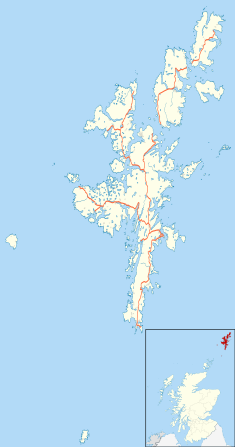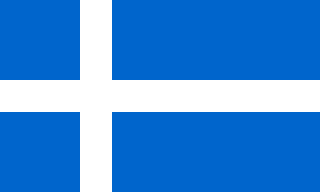
Shetland, also called the Shetland Islands and formerly Zetland, is a subarctic archipelago in the Northern Isles of Scotland, situated in the Northern Atlantic, between Great Britain, the Faroe Islands and Norway.

Lerwick is the main town and port of the Shetland Islands, Scotland. Shetland's only burgh, Lerwick had a population of about 7,000 residents in 2010.

Bressay is a populated island in the Shetland archipelago of Scotland.
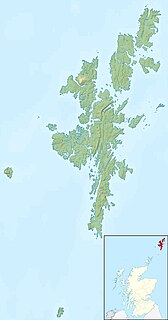
The Isle of Noss or Noss is a small, previously inhabited island in Shetland, Scotland. Noss is separated from the island of Bressay by the narrow Noss Sound. It has been run as a sheep farm since 1900, and has been a national nature reserve since 1955.

Tavish Hamilton Scott is a Scottish politician and former MSP for Shetland. He was Leader of the Scottish Liberal Democrats from 2008 to 2011. He stepped down after the 2011 Scottish Parliament election, in which the Liberal Democrats were reduced to five seats, down from 16 in the previous parliament.
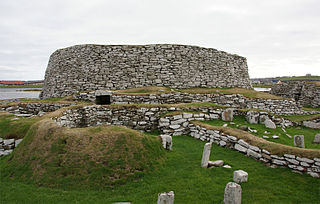
The Broch of Clickimin is a large, well-preserved but restored broch in Lerwick in Shetland, Scotland. Originally built on an island in Clickimin Loch, it was approached by a stone causeway. The broch is situated within a walled enclosure and, unusually for brochs, features a large "forework" or "blockhouse" between the opening in the enclosure and the broch itself. The site is maintained by Historic Scotland. According to its excavator, John R.C. Hamilton, there were several periods of occupation of the site: Late Bronze Age farmstead, Early Iron Age farmstead, Iron Age fort, broch period, and wheelhouse settlement.

The Böd of Gremista, situated at the north end of Lerwick, Shetland, Scotland, is a typical 18th century Shetland fishing booth. It is protected as a category B listed building.

Dunrossness, is the southernmost parish of Shetland, Scotland. Historically the name Dunrossness has usually referred to the area on the Shetland mainland south of Quarff. However, in 2016 there were three separate Shetland Community Councils for a) Gulberwick, Quarff and Cunningsburgh; b) Sandwick; and c) Dunrossness. The 2011 census defined Dunrossness as including everybody within the British ZE2 postal code, which goes as far north as Gulberwick. It has the best and largest area of fertile farmland of any parish in Shetland. Dunrossness includes the island of Mousa, Levenwick, St Ninian's Isle, Bigton, Scousburgh, the Lochs of Spiggie and Brow, Boddam, Quendale, Virkie, Exnaboe, Grutness, Toab, Ness of Burgi, Clumlie Broch, Scatness, Sumburgh Airport, Sumburgh Head, West Voe, the islands of Lady's Holm, Little Holm, Horse Holm island and Fair Isle.
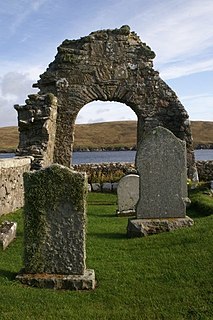
Sandsting is a parish in the West Mainland of Shetland, Scotland, forming a southern arm of the Walls Peninsula. After the parish of Aithsting was annexed into Sandsting in the sixteenth century, it became known as Sandsting and Aithsting parish.
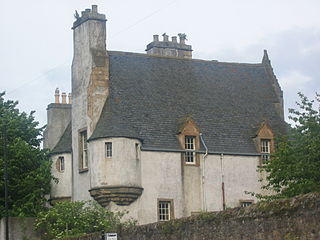
Northfield House is a seventeenth-century historic house at Preston, East Lothian, Scotland, UK. It is situated very close to Hamilton House and Preston Tower, and one mile east to Prestongrange House and the Royal Musselburgh Golf Club. It is a Category A listed building.
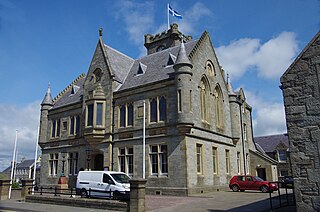
Lerwick Town Hall is a municipal building located in central Lerwick, Shetland, Scotland. It is protected as a Category A listed building.

Preston Hall, or Prestonhall, is a late-18th-century mansion in Midlothian, to the south of Edinburgh, Scotland. It is located 1.5 kilometres (0.93 mi) north of Pathhead on the east side of the Tyne Water, opposite Oxenfoord Castle on the west side. The house, together with several estate buildings, are the work of architect Robert Mitchell, and are protected as Category A listed buildings, the highest level of protection for a historic building in Scotland.

Mertoun House is a country house situated by the River Tweed, 2 miles east of St Boswells in the Scottish Borders. It is home to the Duke of Sutherland. The early 18th-century house is category-A listed, and was designed by Sir William Bruce. The gardens of the house are open to the public, and are included on the Inventory of Gardens and Designed Landscapes in Scotland, the national listing of significant gardens.
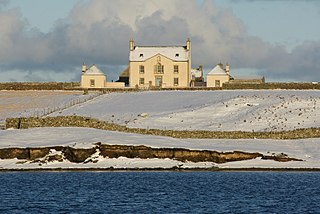
Belmont House is a Georgian country house on the island of Unst, the most northerly of the Shetland Islands, Scotland. It was constructed in 1775 by Shetland landowner Thomas Mouat of Garth, and has been described as "possibly the most ambitious, least-altered classical mansion in the Northern Isles." The house was restored from a derelict state between 1996 and 2010 by the Belmont Trust. The house is now used as a self catering holiday house and venue for events. www.belmontunst.co.uk. It is protected as a category A listed building, and the grounds are included on the Inventory of Gardens and Designed Landscapes in Scotland, the national listing of significant gardens.

Brough Lodge is a 19th-century Gothic mansion on Fetlar, one of the Shetland Islands, in northern Scotland. Built by the Nicolson family, who were responsible for clearing Fetlar of many of its inhabitants, it has been disused since the 1980s. The Brough Lodge Trust has recently started work to restore the building. The house is protected as a category A listed building, and the grounds are included in the Inventory of Gardens and Designed Landscapes in Scotland, the national listing of significant gardens.

Lunna House is a 17th-century laird's house on Lunna Ness in the Shetland Islands. Lunna House is noted for having "the best historic designed landscape in Shetland". In the 20th century it was used as a base of the wartime Shetland Bus operation.

The Haining is a country house and estate in Selkirk in the Scottish Borders. The present house dates from the 1790s, and was a property of the Pringle family. In 2009, the house and grounds were bequeathed to the people of Selkirkshire and the wider public, and a charitable trust is now working on developing the building as a centre for exhibitions and events, highlighting art, culture and history. The ground floor of the House has been refurbished and is now let out for various events and functions. The Old Coach House and Stable outbuildings have been refurbished and now offers six brand new artists studios. A two-bedroom holiday apartment, The Ettrick, is also now available within the ground available for booking via Visit Scotland.

The Hirsel is a Category A Listed stately home near Coldstream, Berwickshire in the Scottish Borders council area. It has been a seat of the Earls of Home since 1611, and the principal seat following the destruction of Hume Castle during the mid-17th century. It was the home of the former British prime minister, Sir Alec Douglas-Home, the 14th Earl of Home.
This is a list of listed buildings in the Shetland Islands. The list is split out by parish.

